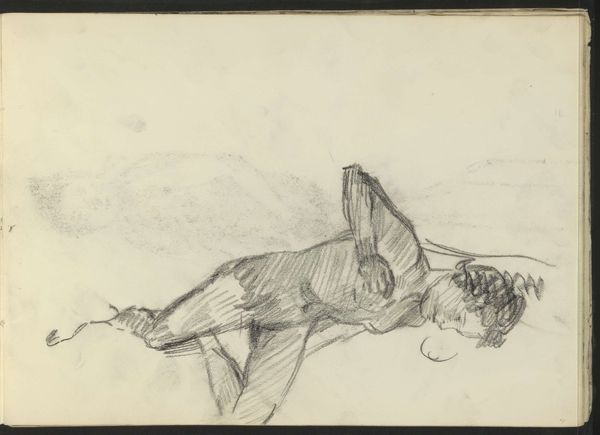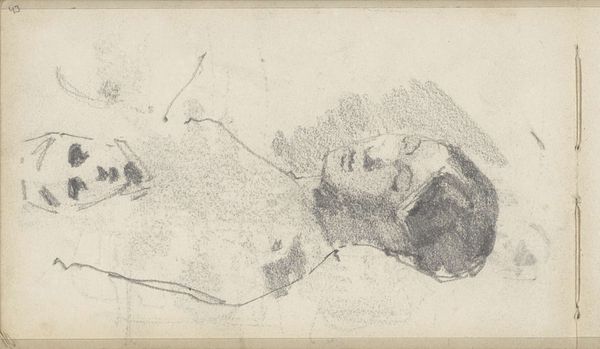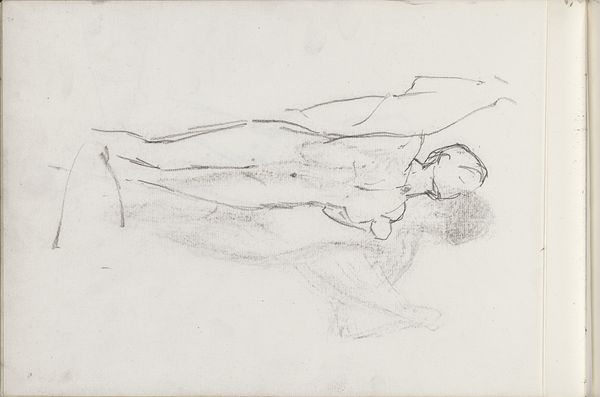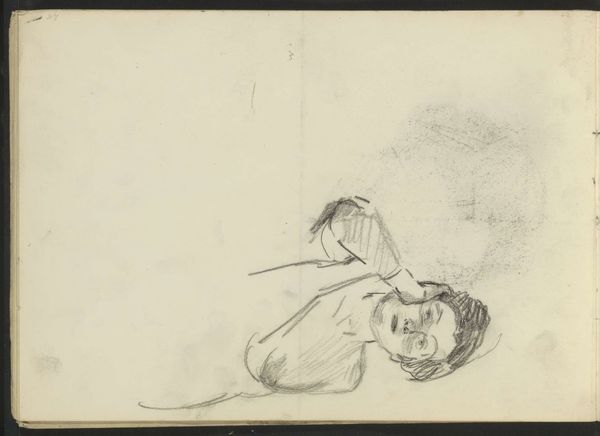
drawing, pencil
#
portrait
#
drawing
#
ink drawing
#
dutch-golden-age
#
pencil sketch
#
pencil
#
modernism
Copyright: Rijks Museum: Open Domain
Editor: This drawing by Willem Witsen, potentially created between 1906 and 1909, is titled "Dorpssmid aan het werk (Bram)," or "Village Smithy at Work". The artwork, a pencil sketch and ink drawing, depicts what appears to be a blacksmith, though presented almost like fragmented studies of the figure and hands. It has a modernist style, but is somewhat reminiscent of earlier Dutch Golden Age portraiture. How would you interpret Witsen’s artistic choices in this work? Curator: This drawing arrests attention, primarily for its masterful use of line and form. Note how Witsen employs varying line weights to define the contours of the smithy, achieving a remarkable sense of volume and mass with minimal strokes. The composition, seemingly fragmented as you noted, can be seen as a series of studies – not just of the figure, but of the potential energy inherent in the blacksmith's work. What kind of rhythm do you see in the repetition of the limb? Editor: The repetition definitely emphasizes movement, but it almost feels interrupted, less about continuous action and more about individual moments frozen in time. Are these then purely formal explorations, or do you feel there's an underlying commentary on labor or the individual worker? Curator: The immediacy and incompleteness inherent in the sketch push toward the formal aspects of this drawing: we witness the artist capturing fleeting gestures and forms rather than presenting a polished statement about labor, etc. However, consider the strategic cropping – the head and feet firmly within the frame, but limbs abruptly cutoff. Editor: It's intriguing how Witsen’s concentration on those forms results in a feeling of dynamic tension, despite the static nature of the drawing itself. Thank you for drawing attention to that! Curator: Indeed. Thinking about these points has certainly enriched my perception of the image!
Comments
No comments
Be the first to comment and join the conversation on the ultimate creative platform.













